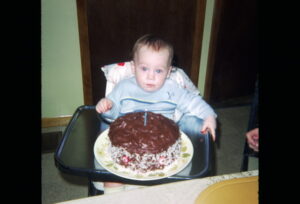It’s that time again – the iPhone no longer holds a charge, and is slower than slow compared to the new ones, so it was off to the Apple store on Saturday for the next iteration of the handheld computer gadget. I got the iPhone 6s in December of 2015, and was thinking of doing the thirty-dollar battery replacement deal and limping along until summer, or maybe when the 8s or the 8+ or whatever comes out. But, whatever. Easier to start new, I guess.
This time, there are more decisions to be made, since there are three different front-line iPhones available: the 8, the larger 8 Plus, and the X. That’s a bit confusing, because it seems like the X would come out after the 9, and the 8 would be long obsolete. Nope. The X is a “special edition” or something. I have no idea what will happen when they go from 8 to 9 to 10. Or maybe they’ll need to do something else. Anyway, I can’t deal with the larger size phone, so the 8 plus and the X were off the table, and the 8 it is.
I still don’t entirely understand how AT&T Next works. I am on some weird plan or sub-plan that required me to turn in my old phone in the next two weeks, and keep paying the $40 a month or whatever for the next 24 months to pay for the new one. I bought AppleCare, bought a new battery case (mostly so I can hold the phone without it slipping out of my hands) and assorted taxes and fees.
What’s odd is that this is the first time I’ve upgraded and had the same screen size, the 4.7″ screen. Each prior upgrade (3G to 5S to 6S) had a change in size. This one is the same, which is slightly underwhelming. In many ways, it feels like the same phone. I even had both phones on my desk the other day, and grabbed the wrong one. It’s not as dramatic as going from a tiny screen to a bigger one of a different aspect ratio.
There are little changes, though. No more headphone jack. I can plug in the included Lightning headphones, which I’ll probably use 99% of the time. There’s a small dongle to plug in standard headphones. I’m not really into Bluetooth earbuds, so I’m not doing that. The only other real change is the home button is slightly different – it isn’t an actual button, but a little dimpled area the size of a button, with haptic feedback. It feels like a button, but won’t get gunk or liquids in there. Oh, stereo speakers are on the bottom now, although I don’t spend a lot of time listening to audio on my phone without being paired to my car or with headphones.
One big difference is that the new phone is much faster. My old one was getting throttled because the battery was dying. The 8 is about twice as fast in benchmarks, but because of the throttling, it’s roughly four times as fast. So scrolling and app launching and whatnot all feel much more responsive. I’m sure I will get used to that in a few days and not notice it anymore, though.
(And I don’t want to get into the argument of “why doesn’t Apple have removable batteries.” Because it’s not 1997. Does the new Samsung Galaxy have a removable battery? Does any phone under a centimeter thick? Does any phone that is even vaguely spill-resistant? It doesn’t come with a floppy disk or S100 expansion bus capability, either. Sorry.)
The other difference is that I optioned up to a 256 GB capacity, up from 64. With 64, I was always within a percent or two from capacity. I also had a byzantine system of playlists to sync only part of my music collection. Now, I have synced all the audio in my iTunes collection, and still have half the phone left. So, time to get more music.
The swap was a bit of a pain in the ass. They activated it as a new phone at the store, then I came home and tried to sync a backup of my old phone onto it. But my phone’s OS was a version newer, so I had to reinstall a new OS to the phone, then wipe it and set it up from backup. I also had to back up, wipe, and restore my watch. All that took a few hours, and syncing over 16,000 songs took a few minutes, but it was otherwise up and running that afternoon.
The strange thing for me is that it’s become slightly easier to let the old phone go. I remember when I replaced my first iPhone, it was bittersweet to return this machine that I’d spent so much time with. But now, it’s like the soul of the machine transfers to the new phone after an upgrade. I’ve still got the same documents, backgrounds, settings, and so on, just in a more robust body. It’s some real Altered Carbon shit.
Anyway, new laptop, new phone, and the iPad is only a year out. The watch is probably the next thing to go, although there’s still a small part of me that thinks I should just get a typewriter and a bunch of index cards and spend the money on a cabin in the mountains or something. The toilet situation is the only thing holding me back, really.

